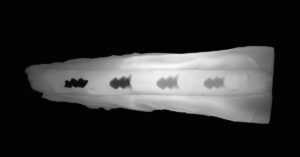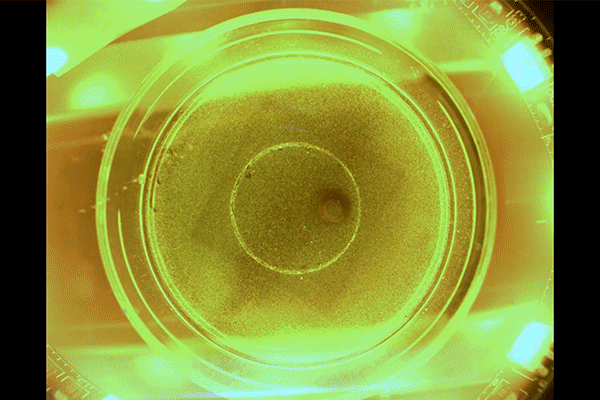
How Micro-Robots Noninvasively Remove Dental Plaque
A team of engineers, dentists, and biologists from the University of Pennsylvania has developed an army of tiny robots that can access hard-to-reach areas of the mouth for plaque and biofilm removal.

A team of engineers, dentists, and biologists from the University of Pennsylvania has developed an army of tiny robots that can access hard-to-reach areas of the mouth for plaque and biofilm removal.
The study, “Catalytic Antimicrobial Robots for Biofilm Eradication” published in Science Robotics, shows that robots with catalytic activity successfully eradicated sticky amalgamations of bacteria enmeshed in protective scaffolding (i.e., oral biofilm).
The team designed two robotic systems: one to work on surfaces, and the second to maneuver inside confined spaces. Development of these biofilm-removal systems was led by Hyun (Michel) Koo, DDS, MS, PhD, of the School of Dental Medicine and Edward Steager, MA, PhD, a senior research investigator in the School of Engineering and Applied Science. The discovery could prove valuable in a wide range of applications, from keeping water pipes and catheters clean to reducing the risk of tooth decay, endodontic infections, and implant contamination.
“Robotic systems can precisely remove plaque and kill bacteria that cause caries or other oral infections, without damaging healthy tissues or disrupting the healthy microbiota,” says Koo. “We envision programing micro-robots to perform automated cleaning precisely where bacteria accumulate and cause oral diseases. This could help clinicians and patients manage and maintain oral health.”
These systems also mean less manual labor for clinicians, as the robots can be deployed to kill and degrade biofilm, while simultaneously removing any biodegraded debris—and without damaging nearby host tissues. Current biofilm removal methods include mechanical biofilm debridement in the office, and at-home treatments, such as toothbrushing and flossing.
“Existing treatments are ineffective because they are incapable of simultaneously degrading the protective biofilm matrix, killing the embedded bacteria, and physically removing the biodegraded products,” says Koo. “These robots can do all three at once effectively and precisely.”

Made of iron oxide nanoparticles, the robots are controlled by a magnetic field. Investigators applied a magnetic field to remove biofilm on a glass surface, and report that after 24 hours the biofilm did not regrow, demonstrating the system completely removed and killed the debris
“The miniaturized robots we built at micron- to sub-millimeter scale were designed to fit inside the root canal,” says Koo. Using a three-dimensional printer with a gel containing the magnetic nanoparticles, the team tested a screw shape to scrub inside a tube and one with fins to clean inside a narrow channel within an extracted tooth. Rotating magnets enabled the robots to be driven through the tube and channel, according to the researchers.
The team will conduct in vivo and clinical efficacy testing to assess if the robotic system is more effective and reliable than traditional methods. “We need to show clinical efficacy and then develop prototypes that are practical for in-office use,” notes Koo.
Featured image: The team’s micro-robots were effective at cleaning hard-to-reach surfaces. This time-lapse image shows one of the molded, helicoid-shaped robots traveling inside a tooth canal. (Image: Alaa Babeer, Elizabeth E. Hunter, and Hyun Koo, DDS, MS, PhD)


